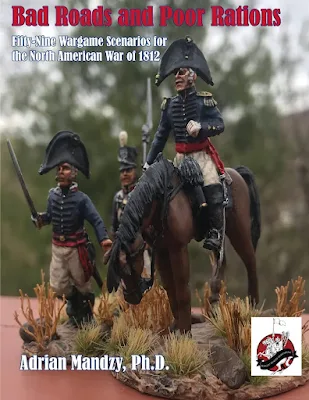Although mostly a miniature table top guy I do like the occasional board game. I grew up with the old Avalon Hill and SPI games and spent hours playing and enjoying them. At the time (1970's). Most of my money I earned went to books and my reenactment gear. But when I could I would pick up a new game.
During that time I was intrigued by an add in Campaign Magazine for a series of American Revolution games by a company called Oldenburg Grenadiers. Especially the Brandywine game as I gave always been fascinated by that battle. Alas! Because no one stocked these and I was shy about ordering by mail I never bought one. Soon I found the company went out of business and these games became scare. Fast forward to thus year at Historicon and one of the dealers had a copy for sale. It was missing three counters and little banged up but I could get it for the price of $15.00 (it usually goes for much much higher prices). I put it down and decided to think about it. While I was doing so my buddy George came up to me holding the game. Here you go, I got it for $10 and thought you might like it!!! I was floured and delighted.
Now here I am in September just getting around to doing a review of the game. I have been tinkering around with it between house projects but now have some serious time to devote to learning it. I came down with Covid, so am locked down for a few days in the house. I have just enough energy to set up the game, take a break, play a few turns and then nap. Sounds like a goid time to write up this review.
The game is very much of the old school Avalon Hill type. On opening the box and examining the board its colorful and almost cartoon like. Very unlike the modern game boards.
The counters are what you would expect with the name of the unit, its movement and combat capabilities listed. Crown forces get two counters per unit as historically they were larger then the American regiments.
Movement is simple series of sequences. American go first and when done British go. Each sequence consists of 1. Unit Morale determination, 2. Movement and 3. Combat. Morale is done for units that were disordered through combat. You move a commander counter up to it and roll a 6D. If the number rolled is even then the unit rallies and operates as normal. Otherwise it is disordered and cannot enter combat and can move just one hex. If attacked its eliminated.
Combat is also simple. You must be next to a counter to fight. You cannot attack with more then one counter against the same enemy. Instead you resolve each attack separately. So no ganging up!
To fight the attacker consults the Combat Option/Resolution Chart. They decide if they are charging or just firing line. The defender decides if they are counter Charging, Firing line or retreating. You the cross reference on the chart, throw a 6D and look up your result.
So in our example lets say the attacker is charging and the defender is firing line and you roll a 1. The British loses one point, the American 3 points and retreats 2 spaces and is disordered. Pretty simple. Rifle units may fight a unit two hexes away while artillery can fight a unit five hexes away. They use a different chart which records how many hits they inflict, if any. In combat Militia units can only use the firing line option in defence. And British units fighting militia add subtract 1 from roll. Cavalry can only charge. The unit they charge must take a morale check. If fail they retreat two spaces.
The game uses a step reduction for combat. For each combat loss you mark off a box, and when the unit reached 0 it is eliminated. Under strength units can combine combat point with one unit giving the other its points and then removed from the game.
The game starts with all American units deployed west of the Brandywine River. The British arrive at selected points four units at a time. Americans must maintain a line if retreat off the board which the British must try and capture. These are first near Chadd's ford but later at other points along the river. So in the first few turns do the Americans concentrate on destroying the British on the table at the ford? But then the British turning moment can out flank them. But the British cannot waste and turns otherwise the game ends before they win. An interesting problem
So there you go. A most simple and nostalgic game.



















.jpg)

